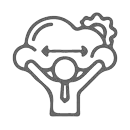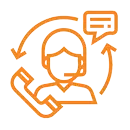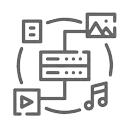Small Equipment Training Courses
Use the filter to change the course type, region or language

COURSE TYPE:
COURSE REGION:
COURSE LANGUAGE:
What is online training? Our online trainings are great for those who want to learn at their own pace and on their own time. Online trainings can be completed from any location, eliminating the need for expensive seminars. Employers can assign employees specific trainings and keep track of their progress and exam scores. We also offer DIY Kits and Train the Trainer courses. Use the filter above to see these options.
What is a DIY training kit? Our training kits offer a full training experience alongside a comprehensive toolset for further learning. These kits are the perfect resource for those who want the freedom of training employees themselves. Unlike traditional trainings that are taken once, the kit offers a complete initial training as well as activities and materials to train employees long after they’ve been certified. We also offer online trainings and Train the Trainer courses. Use the filter above to see these options.
What is Train the Trainer? Train-the-trainer courses allow employers to take full control of the training process. Employees who take these courses are fully certified to use the training kit and train others. This means that employers can hold training seminars and courses without the need for third-party trainers. Employees who complete these courses are certified for life and can train others confidently with a well-tested learning model. We also offer online trainings and DIY training kits. Use the filter above to see these options.
-

CAL OSHA Chainsaw Safety Training Online
$79.00 Add to cart -

CAL OSHA Hand and Power Tools Training Online
$39.00 Add to cart -

Chainsaw – Don’t Let Your Guards Down
$0.00 – $10.00 Select options -

Chainsaw Online Trainer Certification
$700.00 – $725.00 Select options -

Chainsaw Online Training in Spanish
$79.00 Add to cart -

Chainsaw Safety Training – Online
$79.00 Add to cart -

Chainsaw Safety Training Online – Canada
$99.00 Add to cart -

Chainsaw Train the Trainer Certification – Canada
$700.00 – $725.00 Select options -
Sale!

Chainsaw Train the Trainer Certification in Spanish
$700.00 – $725.00 Select options -

Chainsaw Training Kit
$425.00 – $450.00 Select options -

Chainsaw Training Kit – Canada
$425.00 – $450.00 Select options -

Chainsaw Training Kit – Spanish & English
$475.00 – $500.00 Select options -

Hand & Power Tools Online Training
$39.00 Add to cart -

Hand & Power Tools Train the Trainer Certification – Canada
$700.00 – $725.00 Select options -

Hand & Power Tools Training – Canada
$425.00 – $450.00 Select options -

Hand & Power Tools Training Kit
$425.00 – $450.00 Select options -

Hand and Power Tools Online Trainer Certification
$700.00 – $725.00 Select options -

Hand and Power Tools Online Training – Canada
$49.00 Add to cart -

Hand and Power Tools Online Training – Spanish
$39.00 Add to cart -
Sale!

Hand and Power Tools Train the Trainer Certification in Spanish
$700.00 – $725.00 Select options -

Hand and Power Tools Training Kit – Spanish & English
$475.00 – $500.00 Select options -

Industrial Sweeper & Scrubber Online Training
$79.00 Add to cart -

Industrial Sweeper & Scrubber Online Training – Canada
$99.00 Add to cart -

Industrial Sweeper & Scrubber Trainer Certification
$700.00 – $725.00 Select options -

Industrial Sweeper & Scrubber Trainer Certification – Canada
$700.00 – $725.00 Select options -

Industrial Sweeper & Scrubber Training Kit
$425.00 – $450.00 Select options -

Industrial Sweeper & Scrubber Training Kit – Canada
$425.00 – $450.00 Select options -

Landscaping Safety Train the Trainer in Spanish
$700.00 – $725.00 Select options -

Landscaping Safety Training Kit in Spanish
$475.00 – $500.00 Select options -
Sale!

Lawnmower Train the Trainer Certification in Spanish
$700.00 – $725.00 Select options -

Snow Removal Safety Online Training – Canada
$99.00 Add to cart -

Snow Removal Trainer Certification
$700.00 – $725.00 Select options -

Snow Removal Trainer Certification – Canada
$700.00 – $725.00 Select options -

Snow Removal Training Kit
$425.00 – $450.00 Select options -

Snow Removal Training Kit – Canada
$425.00 – $450.00 Select options -

Snow Removal Training Online
$79.00 Add to cart -

Snowblower Online Training
$24.00 Add to cart -

Snowblower Online Training – Canada
$44.00 Add to cart -

Snowblower Trainer Certification
$700.00 – $725.00 Select options -

Snowblower Trainer Certification – Canada
$700.00 – $725.00 Select options -

Snowblower Training – Canada
$425.00 – $450.00 Select options -

Snowblower Training Kit
$425.00 – $450.00 Select options -

Snowmobile Training Kit
$425.00 – $450.00 Select options -

Snowmobile Training Online
$79.00 Add to cart -

Work Zone Safety Trainer Certification
$700.00 – $725.00 Select options -

Work Zone Safety Trainer Certification – Canada
$700.00 – $725.00 Select options
WHY CHOOSE
HARD HAT TRAINING?
Finding small equipment training near you is not necessary because you can complete it online! We’ve become a trusted provider of what we feel is the best small equipment training near me alternative available. Our safety training courses can be done anywhere. We offer online training. We can get you your certification in as little as two hours with our online training. You can also use a more robust, customizable option through our DIY training kits. No matter which option you want, we can help you get the small equipment training you want at a price you can afford.

Flexible Courses

Customer Service

Training Courses

alignment Certificate
What and Why?
What’s In The Small Equipment Training Courses?
Our small equipment presentations include sections on identifying hazards, following policies and procedures, required equipment inspections, and emergency response strategies in case of an accident. These courses also provide the students with examples of real-life accident profiles, which will help them to better understand the potential hazards they work around. Each course comes with a practical evaluation and a corresponding checklist for the instructors to use when administering the exam.
Benefits of Our Small Equipment Training Courses
Employees must know how to inspect their equipment, how to properly use it, and what limits it has. They must also be situationally aware and alert at all times in order to prevent an accident from happening. Small equipment safety training is the optimal way to ensure safety in any work environment where it is being used.
Small Equipment Training Frequently Asked Questions

What is considered small equipment?
Some examples of what would be considered small equipment include a chainsaw, hand and power tools, or a snowblower. Small equipment is any piece of equipment that has to be pushed or held.
How long does small equipment training take?
Our small equipment training length varies depending on the course you choose to take. It generally takes anywhere for 2-3 hours.
What are the hazards associated with small equipment?
Moving parts, noise, electrical dangers, and environmental factors are all common hazards that are related to working with small equipment.
